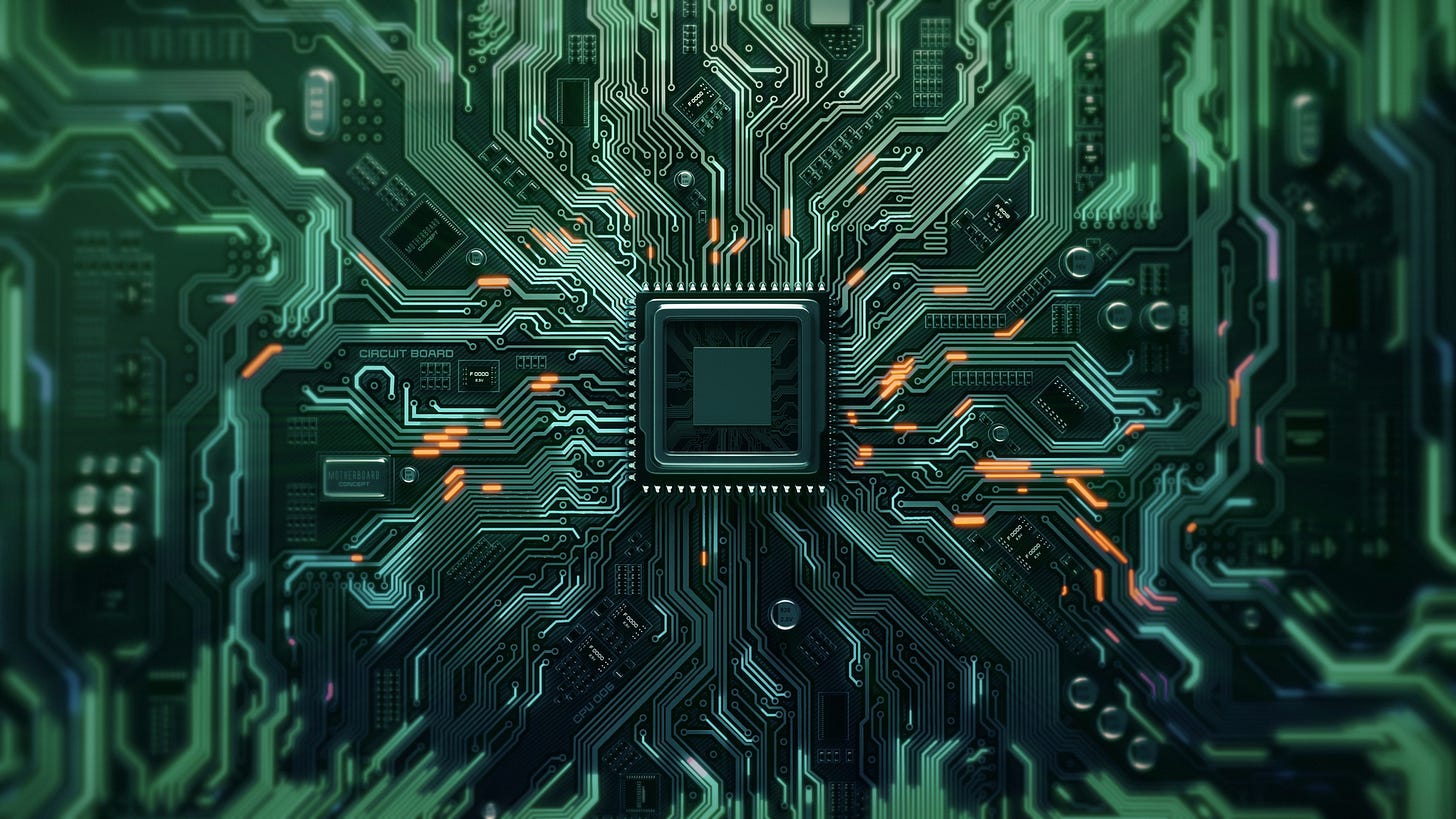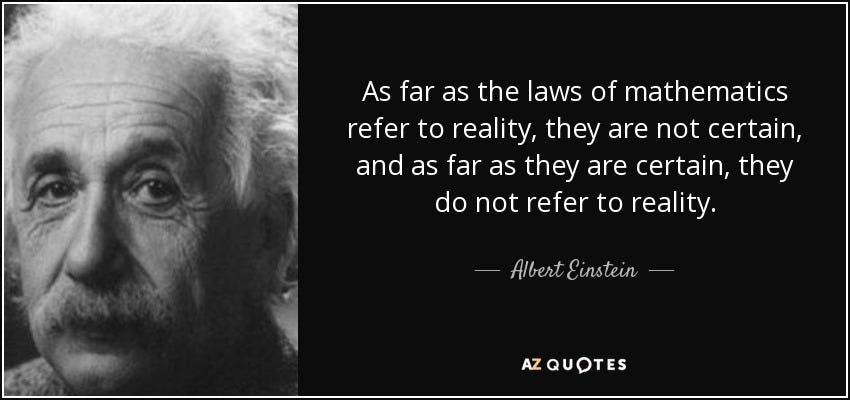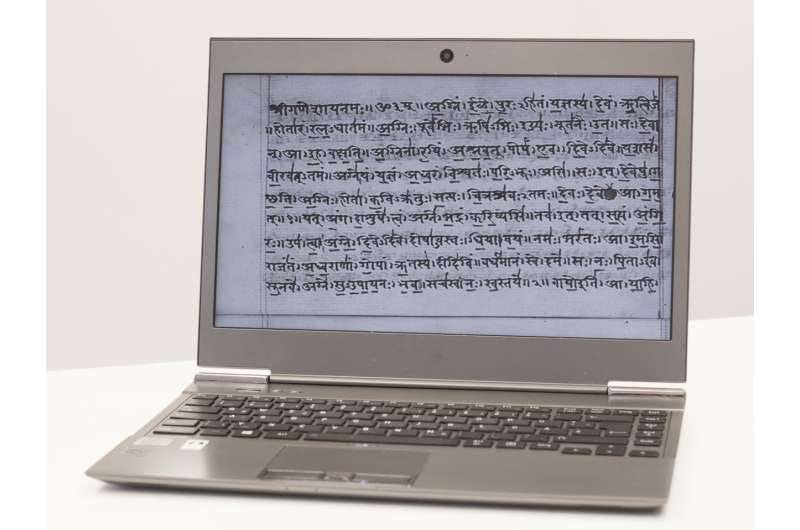"In the universe, there are many more worlds beyond the stars", Allama Iqbal
The Quantum era has already begun.
AI is not very old. But the integration of the principles of quantum mechanics into AI systems would have been inconceivable a few years ago.
Today, Quantum mechanics is now being used to build neural networks and language models that operate according to the fundamental laws of quantum physics. At labs and research institutes around the world, scientists and engineers are integrating physics principles directly into AI systems for the first time in history.
The year 2025 has been declared the International Year of Quantum Science and Technology by the United Nations, marking the centennial of quantum mechanics. This year-long celebration aims to highlight the transformative potential of quantum science and technology and foster international collaboration in the field.
“Both quantum software and hardware have been advancing at breakneck speed over the last 18 months—a pace that mirrors the early days of classical computing. Not long ago, many imagined that 100 qubit quantum computers were achievable within a decade. But earlier this year, Microsoft unveiled the world’s first quantum processor powered by topological qubits.” - Source The Quantum Era has Already Begun, Time Magazine May 2025
So you think you know Physics... ?
The three laws that are most central to Quantum AI are the quantum principles of superposition, entanglement, and interference. Extremely briefly:
Superposition allows a particle to exist in multiple states simultaneously, like a coin spinning in the air, which is neither heads nor tails until observed.
Entanglement links the fates of two or more particles, so measuring the state of one instantly determines the state of the others, regardless of distance.
Interference, in this context, refers to the ability of quantum waves to interact and either reinforce or cancel each other out, resulting in predictable patterns.
What?!?!
I know. But anyway, this is going to change computing forever.
How will it be different?
Instead of traditional binary computations, AI systems are using quantum states to process information in ways that mirror how particles behave at the subatomic level.
These quantum AI systems can literally encode information in the probabilistic states of quantum particles, allowing them to explore multiple computational pathways simultaneously through the same physical processes that govern quantum tunnelling and wave-particle duality.
There are many-worlds beyond Computers…
Quantum technology is grounded in the principles of physics, not merely an advancement in computer science. At its core, quantum technology leverages the laws of physics in ways that extend far beyond conventional computing.
Quantum offers a wide range of applications, including advancements in computing, communication, sensing, and materials science.
Quantum computers, for example, can tackle complex problems beyond the reach of classical computers, such as drug discovery, materials science, and financial modelling. Quantum sensors provide high precision and sensitivity for applications such as medical imaging (MRI), navigation, and environmental monitoring.
Quantum cryptography also promises enhanced security for communications.
Albert Einstein's work, particularly his contributions to quantum theory and the concept of entanglement, has been foundational to the development of quantum computing, though he was critical of some interpretations of quantum mechanics.
His insights into light quanta (photons) and the nature of reality at the quantum level laid the groundwork for understanding qubits and quantum phenomena, such as entanglement, which are crucial for building quantum computers. While Einstein himself didn't envision quantum computing, his theories are essential to the field.
There are many ancient traditions with unprovable links to quantum theory as well...
Source: Indian sacred texts and the logic of computer ethics by Vienna University of Technology
… but it is Quantum Applications in AI which are going to transform our AI-centered world
Why Quantum AI is So Significant
Something interesting is happening when quantum computing meets artificial intelligence. To understand why this matters, we need to take a step back and examine how computers currently operate.
Why This Matters for AI
Quantum AI leverages the power of quantum computing to enhance artificial intelligence, potentially solving problems currently intractable for classical computers.
When you combine quantum properties with AI, you get systems that can
Explore many possible solutions at the same time
Find patterns in data that regular computers miss
Process information more like human brains actually work
In essence, Quantum AI seeks to harness the unique capabilities of quantum computers to address problems that are too complex or computationally expensive for classical computers, potentially leading to breakthroughs across various industries.
The global quantum computing market shows significant room for growth, currently valued at $1.3-1.4 billion in 2024 and projected to reach $16-20 billion by 2032-2034 at a robust 25-35% CAGR.
Beyond established applications in aerospace & defense (32.6% market share) there is huge potential in applications in drug discovery, materials science, finance, cybersecurity, and other fields.
Quantum computing is being harnessed through initiatives like the "Quantum Healthy Longevity Innovation Mission" to tackle big, real-world problems in climate and health. There are already a slew of breakthroughs in carbon sequestration, hydrogen fuel cells. Quantum batteries promise "major performance advantages”, including faster charging, increased capacity, and improved efficiency.
For investors, the opportunity spans climate tech, longevity biotech, advanced materials, and energy storage - sectors where quantum's ability to simulate molecular interactions could unlock trillion-dollar markets that classical computers cannot access.
How Computers Think Today
Every computer you've ever used thinks in binary: yes or no, on or off, 1 or 0. It's like having a conversation where every question can only be answered with "yes" or "no." This works, but it has its limitations.
Quantum computers work differently. They can hold multiple answers simultaneously. Imagine asking a question and getting "yes," "no," and "maybe" all simultaneously—then using all those possibilities to solve problems.
This happens through three key principles:
Superposition. A quantum bit can be in multiple states at once. While a regular computer bit is either 1 or 0, a quantum bit can be both until you measure it.
Entanglement. Quantum particles can be connected in ways where changing one instantly affects the other, no matter how far apart they are. Albert Einstein called this "spooky action at a distance."
Interference. Quantum systems can amplify the right answers and cancel out the wrong ones, like tuning a radio to get clearer reception.
Here is a visualisation of how it works, from a data-scientist: .
Not helpful? I thought so.
To try to explain more clearly:
Classical computers process information using bits that exist in definite states of either 0 or 1. They perform calculations by manipulating these bits through logical operations using transistors, which are essentially tiny electronic switches that are either on or off. The processor executes instructions sequentially, following predetermined pathways through circuits to solve problems step-by-step.
Quantum computers work fundamentally differently. Instead of bits, they use quantum bits (qubits) that can exist in a superposition of both 0 and 1 simultaneously. This quantum property allows a qubit to be in multiple states at once until it's measured, at which point it collapses to either 0 or 1.
The generator comes from quantum entanglement, where qubits become correlated in ways that classical physics can't explain. It is sometimes called “mysterious” entanglement.
When qubits are entangled, measuring one instantly affects the others, regardless of distance. This creates exponentially scaling computational possibilities - while 3 classical bits can represent only one of 8 possible combinations at a time, 3 qubits can represent all 8 combinations simultaneously.
So, if a classical computer were trying to solve a maze, it would test each path one by one; a quantum computer can essentially "walk down all paths at once" due to superposition, then, when you measure the result, it gives you the answer that emerged from testing all possibilities simultaneously.
So, it is about probability rather than solving for specific outcomes. The quantum computer doesn't actually compute every path; it uses quantum properties to arrive at the solution through parallel exploration.
What Are Quantum-specific Computer Systems?
A quantum computer system is a complete setup designed to perform quantum computations. It typically consists of a quantum processor (or quantum chip), a control system, a classical computing unit, and a set of specialised algorithms that leverage quantum mechanics, such as superposition and entanglement.
Source is here: Explore Quantum Computer Systems: Types & Key Features
Key Components of Quantum Computer Systems
1. Quantum Processor (QPU) The quantum processor, also known as the quantum processing unit (QPU), is the heart of any quantum computer. It consists of qubits, the quantum equivalent of classical bits, which are the basic units of quantum information. The processor is responsible for executing quantum algorithms.
2. Qubits Qubits are fundamental to quantum computing. Unlike classical bits that are either 0 or 1, qubits can exist in a superposition of states, allowing quantum computers to perform many calculations simultaneously. The type of qubits used in quantum computer systems varies, including superconducting qubits, trapped ion qubits, and photonic qubits.
3. Quantum Control Systems These systems manage the operations of the quantum processor, ensuring that qubits are correctly manipulated and that quantum gates are applied. They typically involve complex microwave pulses, lasers, or magnetic fields to control qubit behaviour.
4. Classical Computing Unit While quantum processors handle quantum calculations, classical computers are used to process the input and output data, orchestrate the quantum operations, and correct errors in quantum computations. The classical computer is necessary for the hybrid approach that many quantum systems use.
5. Cryogenics Many quantum computers, particularly those utilising superconducting qubits, operate at near absolute zero temperatures to minimise noise and preserve quantum coherence. Cryogenic systems are therefore crucial for stabilising quantum processors.
5 quantum-computing breakthroughs right now.
1. Better attention systems
AI models like ChatGPT work by paying attention to different parts of the text. Quantum computing makes this process much more efficient and nuanced.
Instead of processing attention linearly, quantum systems can consider multiple attention patterns simultaneously. This means AI can understand the context better while using less energy.
2. Quantum language models
Researchers are building language models that run on quantum computers. These models can explore multiple interpretations of a sentence simultaneously, much like humans do when reading.
When you read "The chicken is ready to eat," you understand it could mean the chicken is cooked or the chicken is hungry. Quantum language models can hold both meanings simultaneously.
3. Incredible compression
Scientists have developed a method to compress AI models by 90% without compromising their capabilities. They're using quantum circuits to encode knowledge in completely new ways.
This means powerful AI could run on much smaller devices with less energy.
4. Processing multiple types of information
Current AI systems struggle to process text and images together in a seamless manner.
Quantum neural networks build on this principle but leverage the unique properties of qubits in quantum computers. Since qubits can exist in superposed quantum states, quantum neural networks can perform numerous calculations in parallel. This creates much larger network structures with multiple quantum layers than classical neural networks.
Quantum AI can integrate different types of data naturally, much like human perception.
You don't process the visual and audio parts of a movie separately. Your brain integrates them automatically. Quantum AI is moving toward this kind of integrated processing.
5. AI helping build Quantum computers
Here's something fascinating: AI systems are now helping design better quantum computers. This creates a feedback loop where each technology improves the other.
Language models can optimise quantum circuits, while quantum computers enhance the power of AI. It's a virtuous cycle of innovation
Does this matter…?
The real significance goes beyond faster computers or better AI. Quantum AI could open up entirely new realms of computation that neither traditional computers nor biological brains can access.
Current AI systems “think” in a step-by-step manner, following rigid patterns. Even human brains are limited by biological constraints.
But quantum AI can hold contradictions, explore multiple realities simultaneously, and potentially access forms of information processing that don't exist in nature.
This could lead to discoveries and insights that are fundamentally beyond the reach of biological intelligence. We're not just making AI more human-like - we're potentially creating forms of intelligence that transcend biological limitations entirely.
If our computers start thinking more like brains, what becomes possible?
Many-Worlds & Quantum Computing
The Many-Worlds Interpretation (MWI) of quantum mechanics is a theory that suggests every possible outcome of a quantum event actually occurs, each in its own parallel universe.
Proposed by physicist Hugh Everett in the 1950s, it aimed to resolve the "measurement problem" in quantum theory without relying on the concept of an observer collapsing a wavefunction.
Many-Worlds & Quantum systems
Many-Worlds Interpretation (MWI) is a way to explain what happens in quantum physics.
The basic idea: When quantum particles could do multiple things at once, MWI says they actually do all those things - but in separate, parallel universes. So instead of one outcome, you get many worlds, each with a different result.
Why it matters: This helps explain why quantum systems seem so strange and unpredictable. From our perspective, we only see one outcome, but MWI suggests all the other possibilities are happening too, just in universes we can't access.
Real-world impact: MWI doesn't directly power any technology yet. But it has shaped how scientists think about quantum computing, where particles can process multiple possibilities simultaneously, kind of like how MWI describes multiple realities existing at once.
Bottom line: MWI is mainly a way to make sense of quantum weirdness, not a practical tool. It helps researchers understand why quantum systems behave so differently from everyday objects.
Many-Worlds & Applications
MWI is useful for thinking about the early universe (where there's no observer to collapse quantum states) and quantum computing (where the math works cleanly without messy collapses). In quantum cosmology the MWI allows for discussion of the whole Universe, thereby avoiding the difficulty of the standard interpretation which requires an external observer Is Many-Worlds the Best Interpretation of Quantum Mechanics? - Consensus: AI Search Engine for Research.
MWI isn't a technology , it is actually just a way of thinking. It doesn't change how we build quantum computers, but it does shape how scientists think about reality and measurement.
Many-Worlds & Consciousness
Some philosophers wonder: if reality splits into many branches, why do I only experience one? Philosopher David Wallace has argued that for the word "I" to make sense, your consciousness has to be confined to a single branch of the quantum multiverse.
The idea is that consciousness somehow "follows" just one branch at a time, which is why you don't feel like you're living multiple lives simultaneously. By applying the Born rule, observers do not experience multiple realities at once but instead follow one branch after each quantum event.
But this is all philosophical speculation - not actual physics. The MWI has inspired philosophical debates about the nature of reality, consciousness, and the relationship between the macroscopic world of classical reality and the underlying quantum substrate.
Most interestingly for me, Quantum AI will NOT change the nature of WHAT consciousness is, but it will fundamentally impact HOW we explore consciousness.
In other wor(l)ds, Quantum AI, with all of its embedded features of Quantum physics, will help in exploring new possible avenues or PORTALS of consciousness which we cannot yet explore.
AI presents us with infinite possible efficiencies in logical reasoning. But quantum, with all its multilayered windows, presents us with worlds we did not know even existed.
For scientists, consciousness theories present an infinite loop. They often place these conversations within the realm of Physics and Philosophy. It is not yet definitively proven, and this theory suggests that these quantum effects, potentially occurring within the brain's microtubules, could explain aspects of consciousness and subjective experience.
Here is a previous detailed post I wrote on Theories of Consciousness and Quantum. (it is not as dense as it sounds I promise)!
Caveats
Challenges in Quantum Computer Systems
Despite their potential, quantum computer systems face several challenges: 1. Error Correction: Quantum error correction is one of the most pressing issues in quantum computing. Quantum states are fragile, and even small disturbances can cause errors in calculations. 2. Scalability: Building large-scale quantum computers with many qubits that can work together efficiently is still a significant hurdle. 3. Environmental Sensitivity: Quantum systems are susceptible to their environment, which is why maintaining low temperatures and shielding from external noise is essential.
Quantum AI & uncertain futures
Naturally, there is also criticism of quantum AI's potential. The theoretical advantages of quantum algorithms are only valid if errors in hardware and software can be minimised. Current quantum computers still need to be less error-prone to solve truly complex problems. Moreover, scalable quantum systems with sufficient qubits are exceptionally technically challenging.
Quantum computing shows promise for specific problems, not "any application." The timeline for broad commercial value remains uncertain, likely extending well beyond 2025-2030 for most applications.
Laure Prouvost: WE FELT A STAR DYING Kraftwerk Berlin, 21 February — 4 May 2025 In a new commission, Laure Prouvost explores quantum phenomena and their sensitivity to cosmic and planetary forces. WE FELT A STAR DYING follows two years of research and rare access to a quantum computer.
The project grows from the artist’s conversations with philosopher Tobias Rees and scientist Hartmut Neven, which led to Prouvost’s experiments with a new AI model trained on data recorded from quantum computations. The results can be experienced in a multisensory installation, including video, sound and scent. Presented in the industrial space of Kraftwerk Berlin, a former power plant, the commission opens a dynamic reflection on technological development today.







![Figure 27. The Circuit Visualization [Image by Author] Figure 27. The Circuit Visualization [Image by Author]](https://substackcdn.com/image/fetch/$s_!QrBV!,w_1456,c_limit,f_auto,q_auto:good,fl_progressive:steep/https%3A%2F%2Fsubstack-post-media.s3.amazonaws.com%2Fpublic%2Fimages%2F5e5c4a73-bf92-4079-940a-0d31fb9837a8_1912x394.png)
Wow! really informative! I didn't know about quantum AI!